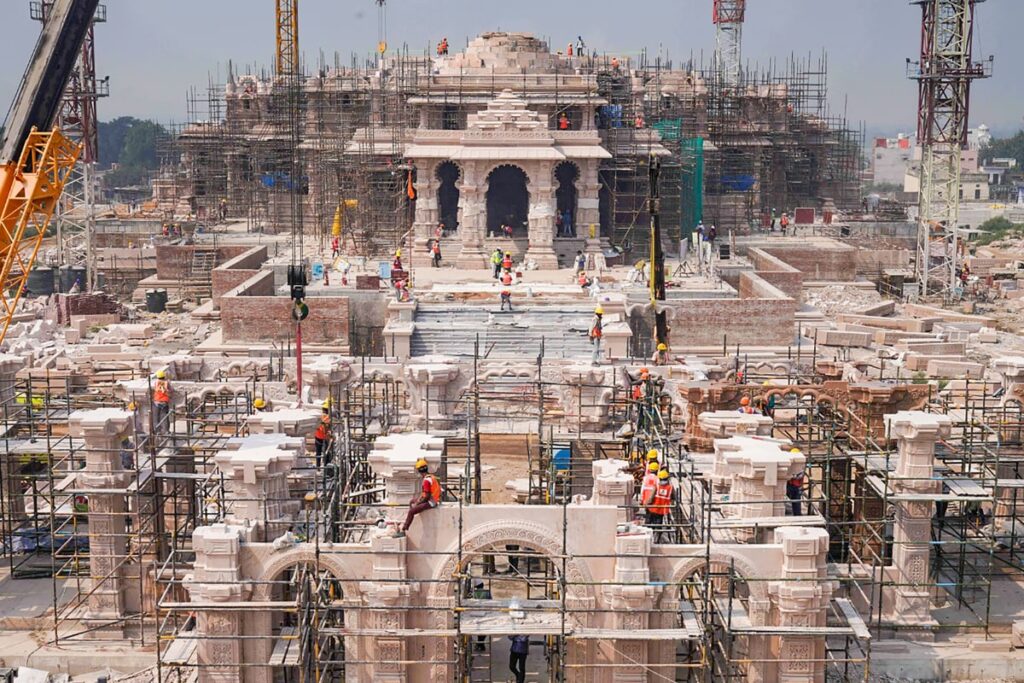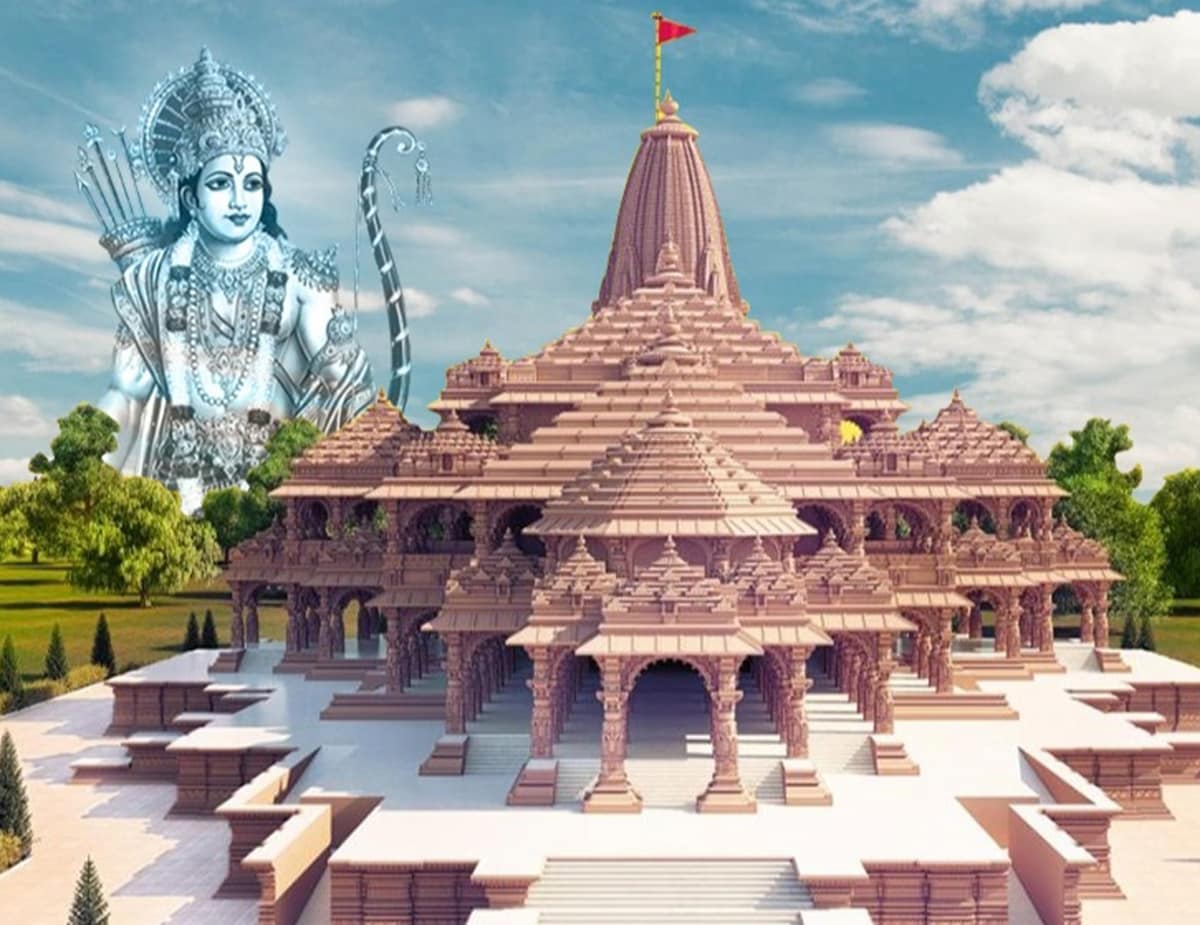Ayodhya Temple: A Tapestry of History, Culture, and Faith – The town of Ayodhya, nestled along the banks of the sacred Sarayu River, holds a timeless charm and a profound historical and cultural legacy. In the heart of Ayodhya lies a temple that has been at the epicenter of historical events, legal controversies, and spiritual fervor – the Ayodhya temple. This article takes you on a journey through the annals of time, exploring the intricate tapestry of Ayodhya’s history, religious significance, legal battles, and the remarkable reconstruction of the temple.

Historical Background of Ayodhya Temple
Tracing the roots of the Ayodhya temple requires delving into the rich tapestry of Indian history. The temple’s origins can be traced back centuries, with a history that intertwines with the rise and fall of empires and the ebb and flow of societal changes. From its early construction to the various renovations over the years, the Ayodhya temple stands as a testament to the enduring spirit of its devotees.
Religious Significance
In Hindu mythology, Ayodhya is revered as the birthplace of Lord Rama. The temple, dedicated to Lord Rama, holds immense religious significance for millions of devotees worldwide. The spiritual aura surrounding Ayodhya is palpable, and pilgrims flock to the temple to seek blessings, immerse themselves in prayer, and partake in the divine atmosphere that permeates the town.
Legal and Controversial Aspects
The Ayodhya temple gained international attention due to the Babri Masjid-Ram Janmabhoomi dispute. Decades of legal battles culminated in landmark judgments that shaped the course of India’s cultural and legal landscape. The resolution of the dispute paved the way for the reconstruction of the temple, bringing closure to a contentious chapter in the country’s history.
Architectural Marvels of the Temple
The Ayodhya temple’s design is a masterpiece, blending intricate craftsmanship with profound symbolism. The architecture reflects not only the cultural and religious heritage of India but also showcases the skill and artistry of the craftsmen involved in its construction. From the intricately carved pillars to the towering spires, every element tells a story of devotion and reverence.
Cultural Impact
The cultural impact of the Ayodhya temple extends beyond its religious significance. It has inspired poets, artists, and writers for centuries, leaving an indelible mark on India’s artistic and literary landscape. Festivals such as Diwali, celebrated with great pomp and splendor in Ayodhya, draw people from all walks of life to partake in the cultural vibrancy surrounding the temple.
Reconstruction Process
The reconstruction of the Ayodhya temple was a monumental task, requiring meticulous planning and execution. Overcoming challenges posed by logistical issues, environmental concerns, and the need to preserve the site’s historical integrity, the project emerged as a symbol of resilience and determination. The result is a resplendent temple that stands as a beacon of faith and architectural brilliance.
Tourist Attractions and Pilgrimage
Ayodhya, with its historical and religious significance, has become a magnet for tourists and pilgrims alike. Visitors are captivated by the town’s serene ambiance, historical monuments, and the spiritual aura of the temple. Pilgrims embark on journeys to Ayodhya, seeking not just a physical destination but a profound spiritual experience.
Community Harmony and Reconciliation
In the aftermath of the legal disputes, Ayodhya has become a symbol of community harmony and reconciliation. Initiatives aimed at fostering understanding and unity among different religious communities have gained traction, turning Ayodhya into a model for peaceful coexistence.
Global Recognition
The Ayodhya temple has transcended geographical boundaries, attracting global attention for its cultural and historical significance. Scholars, researchers, and enthusiasts from around the world recognize the temple as a testament to India’s rich heritage and its ability to preserve and celebrate its cultural identity.
The Future of Ayodhya Temple
As Ayodhya looks toward the future, efforts to ensure the sustainability and conservation of the temple gain prominence. Anticipated developments, projects, and ongoing efforts to preserve the temple’s legacy underscore the commitment to safeguarding this cultural gem for generations to come.
Influence on Modern Architecture
The architectural brilliance of the Ayodhya temple has not only stood the test of time but continues to influence modern architectural trends. Architects and designers draw inspiration from the temple’s design principles, incorporating elements that pay homage to India’s rich cultural and artistic heritage.
Lessons Learned from the Ayodhya Experience
The Ayodhya experience holds valuable lessons for society and governance. It serves as a reminder of the importance of dialogue, understanding, and inclusivity in addressing complex historical and cultural issues. The journey of Ayodhya reflects the resilience of a nation in navigating challenging waters while upholding its diverse cultural fabric.
Celebrity Endorsements and Support
Influential personalities from various fields have lent their support to the Ayodhya temple cause. Their endorsements not only amplify the cultural significance of the temple but also contribute to shaping positive public perceptions. The collective support from celebrities reinforces the idea that the Ayodhya temple is a symbol of unity that transcends individual beliefs.
Conclusion
In conclusion, the Ayodhya temple stands as a testament to the intertwining of history, culture, and faith. From its historical roots to the legal battles and the remarkable reconstruction, the journey of Ayodhya reflects the resilience of a community and a nation. As the temple continues to inspire millions, it remains a beacon of cultural identity and religious harmony.
Frequently Asked Questions (FAQs)
- Is the Ayodhya temple open to visitors throughout the year?
- Yes, the Ayodhya temple is open to visitors year-round, and it welcomes pilgrims and tourists alike.
- What festivals are celebrated at the Ayodhya temple?
- Diwali is one of the major festivals celebrated at the Ayodhya temple, attracting devotees from across the country.
- Are there any restrictions for non-Hindu visitors at the temple?
- The Ayodhya temple is open to visitors of all faiths, fostering an inclusive environment.
- How can one contribute to the conservation efforts of the Ayodhya temple?
- Contributions to the temple’s conservation efforts can be made through official channels or designated funds.
- Can visitors participate in religious ceremonies at the Ayodhya temple?
- While certain ceremonies are restricted, visitors can witness and participate in some of the temple’s religious activities.




